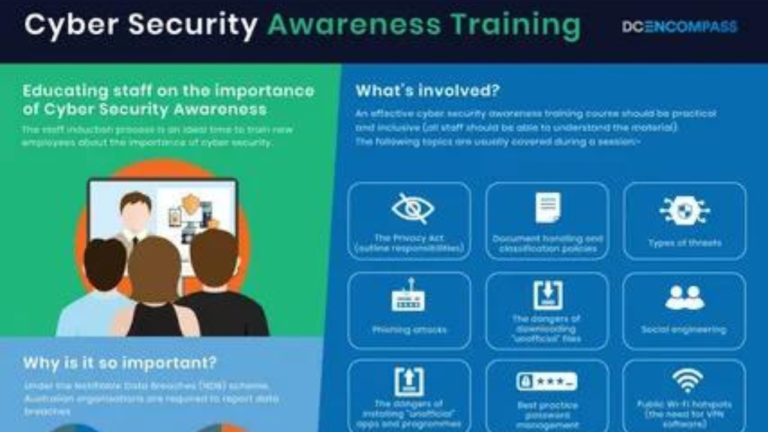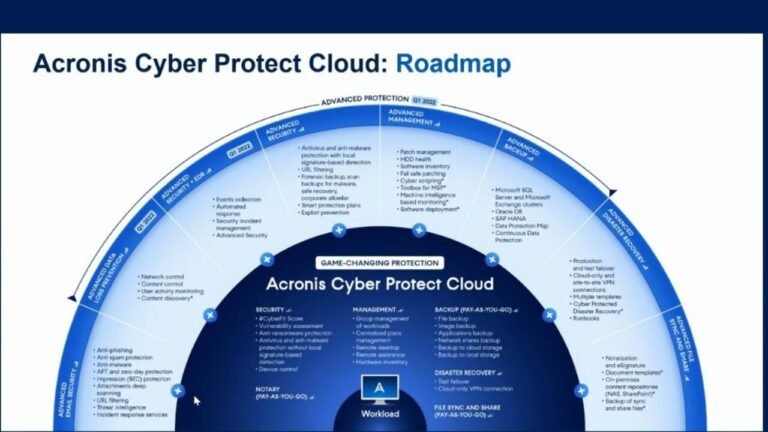Best Cyber Security Training for Employees
Introduction
As someone who’s spent the better part of the last decade working in the Cyber Security Training industry, I’ve seen my fair share of employees who are completely clueless when it comes to Cyber Security Training. It’s honestly a little frightening. I mean, these are the very same people we’re entrusting with sensitive data and crucial company systems, and yet they can’t even spot a phishing email if it hit them over the head. Sigh. Talk about a recipe for disaster, am I right?
But you know what they say – you can’t teach an old dog new tricks. Or can you? That’s exactly what I’m here to talk about today, folks. The best Cyber Security Training for employees. Because let’s face it, in this day and age, Cyber Security Training isn’t just the IT team’s problem. It’s everyone’s problem. And if your employees aren’t properly trained, well, you might as well just hand the keys to your kingdom over to the hackers on a silver platter.
Cyber Security Training for Employees
Why is Cyber Security Training for Employees So Important?
Look, I get it. Cyber Security Training can be a real snooze-fest for a lot of people. All those technical terms, complicated protocols, and endless security updates – it’s enough to make anyone’s eyes glaze over. But the reality is, ignoring Cyber Security Training can have some pretty dire consequences.
Think about it – your employees are the first line of defense against cyber threats. They’re the ones who are interacting with sensitive data, accessing company systems, and communicating with clients and partners on a daily basis. If they don’t know how to spot a phishing scam, or they’re using weak passwords, or they’re clicking on shady links, they’re basically handing cybercriminals the keys to the kingdom.
And the fallout from a successful cyber attack? Yikes. We’re talking about things like data breaches, system downtime, financial losses, and worst of all, damaged reputations. I mean, can you imagine the PR nightmare if your company’s private information gets splashed all over the headlines? Talk about a major of.
What Should Cybersecurity Training for Employees Cover?
Okay, so we’ve established that cybersecurity training for employees is an absolute must. But what exactly should this training cover? Well, let me break it down for you:
Phishing and Social Engineering Awareness: First and foremost, your employees need to be able to identify phishing scams and other social engineering tactics. They need to know the telltale signs of a suspicious email or message, and they need to understand the importance of verifying the source before clicking on any links or attachments.
Password Best Practices: Strong passwords are the foundation of good cybersecurity. Your employees need to understand the importance of using unique, complex passwords for all their accounts, and they need to know how to properly store and manage those passwords.
Secure Remote Work Protocols: In the wake of the pandemic, remote work has become the norm for many companies. But that means your employees need to be trained on how to access company systems and data securely from their home environments.
Data Handling and Privacy: Your employees need to understand the importance of protecting sensitive data, whether it’s customer information, financial records, or intellectual property. They should know how to properly handle and store this data, and they should be aware of any relevant privacy regulations.
Incident Response and Reporting: Let’s face it, even with the best cybersecurity training in the world, things can still go wrong. That’s why your employees need to know what to do if they suspect a security breach or other incident. They need to know who to report it to, and they need to understand the importance of acting quickly.
Ongoing Security Awareness: Cyber Security Training is an ever-evolving landscape, and your employees need to be kept up-to-date on the latest threats and best practices. That means regular refresher training, security alerts, and ongoing communication about the importance of cybersecurity.
How to Deliver Effective Cyber Security Training for Employees
Okay, so you’ve got a solid understanding of what your Cyber Security Training for employees should cover. But how do you actually deliver it in a way that’s engaging, effective, and actually sticks?
Well, let me tell you, it’s all about variety, my friends. Gone are the days of the dry, boring PowerPoint presentations and monotonous lectures. Nowadays, it’s all about keeping things fresh, interactive, and fun (yes, fun!).
Interactive Workshops and Simulations: One of the best ways to really drive home the importance of Cyber Security Training is to get your employees actively involved. That’s where interactive workshops and simulations come in. Think phishing email scavenger hunts, password cracking competitions, and even full-blown cyber attack simulations. Trust me, your employees will be way more engaged when they’re actively participating in the learning process.
Gamification and Leaderboards: And speaking of engagement, who doesn’t love a little friendly competition? Incorporating gamification elements, like leaderboards and point-scoring systems, can make your cybersecurity training feel more like a game than a chore. Plus, a little healthy rivalry can really motivate your employees to up their security game.
Bite-Sized, Bite-Sized Content: Let’s be real, attention spans these days are short. That’s why it’s important to break your Cyber Security Training down into easily digestible, bite-sized chunks. Think short videos, interactive quizzes, and even micro-learning modules that your employees can access on-the-go.
Personalized, Contextual Learning: And let’s not forget the importance of relevance. Your employees are way more likely to engage with Cyber Security Training that’s tailored to their specific roles, responsibilities, and daily workflows. So make sure to personalize the content and provide context-specific examples and scenarios.
Ongoing Reinforcement and Refreshers: But the learning doesn’t stop there, folks. Cyber Security Training is a constantly evolving landscape, which means your employees need ongoing reinforcement and refresher training. That could mean monthly security updates, quarterly trainings, or even micro-learning sessions sprinkled throughout the year.
FAQs About Cybersecurity Training for Employees
Q: How often should employees receive Cyber Security Training?
A: Ideally, employees should receive Cyber Security Training on a regular, ongoing basis – think quarterly or even monthly. However, at a minimum, they should undergo comprehensive training at least once a year, with periodic refreshers and updates in between.
Q: What’s the best way to measure the effectiveness of Cyber Security Training?
A: There are a few key metrics you can use to gauge the effectiveness of your cybersecurity training program, including:
- Phishing Simulation Success Rates: Track how many employees successfully identify and report phishing attempts.
- Security Incident Reporting: Monitor how quickly and accurately employees report potential security incidents.
- Knowledge Assessments: Administer regular quizzes and tests to measure employee knowledge retention.
- Behavioral Changes: Observe changes in employee behavior, like stronger password habits or more cautious email practices.
Q: Should cybersecurity training be mandatory for all employees?
A: Absolutely. Cybersecurity is not just an IT problem – it’s everyone’s responsibility. All employees, regardless of their role or seniority, should be required to undergo comprehensive cybersecurity training. After all, a single careless click can put the entire organization at risk.
Q: How can I make cybersecurity training more engaging and interactive?
A: There are a ton of ways to make Cyber Security Training more engaging and interactive for your employees. Some ideas include:
- Gamification: Incorporate game-like elements, like leaderboards and point-scoring systems.
- Hands-On Exercises: Get employees actively involved in activities like phishing email scavenger hunts.
- Storytelling: Use real-world examples and case studies to bring the content to life.
- Multimedia: Leverage videos, animations, and interactive modules to keep things lively.
- Microlearning: Break training down into bite-sized, on-the-go sessions.
Q: What are the consequences of not providing adequate Cyber Security Training?
A: The consequences of failing to provide proper cybersecurity training for your employees can be severe. We’re talking about things like data breaches, system downtime, financial losses, and irreparable damage to your company’s reputation. Not to mention the legal and regulatory implications, which can include hefty fines and even criminal charges in some cases. The bottom line is, skimping on cybersecurity training is simply not worth the risk.
Conclusion
Alright, folks, there you have it – the ultimate guide to delivering effective Cyber Security Training for your employees. I know it might seem like a lot to take in, but trust me, it’s worth the effort.
Think about it this way – your employees are the first line of defense against cyber threats. They’re the ones who are interacting with sensitive data, accessing critical systems, and communicating with clients and partners every single day. If they don’t know how to spot a phishing scam, or they’re using weak passwords, or they’re clicking on shady links, they’re basically handing the keys to the kingdom over to the cybercriminals.
And the consequences of a successful cyber attack? Yikes. We’re talking about things like data breaches, system downtime, financial losses, and worst of all, damaged reputations. I mean, can you imagine the PR nightmare if your company’s private information gets splashed all over the headlines? Talk about a major of.
So, my fellow business owners and leaders, I urge you – take Cyber Security Training seriously. Invest in comprehensive, engaging, and ongoing training for your employees. Empower them to be the first line of defense against cyber threats, and watch as your organization’s security posture skyrockets.
Because at the end of the day, cybersecurity isn’t just an IT problem – it’s everyone’s problem. And the sooner we all start taking it seriously, the better off we’ll all be.







Your point of view caught my eye and was very interesting. Thanks. I have a question for you.
Your point of view caught my eye and was very interesting. Thanks. I have a question for you.
Thanks for sharing. I read many of your blog posts, cool, your blog is very good.